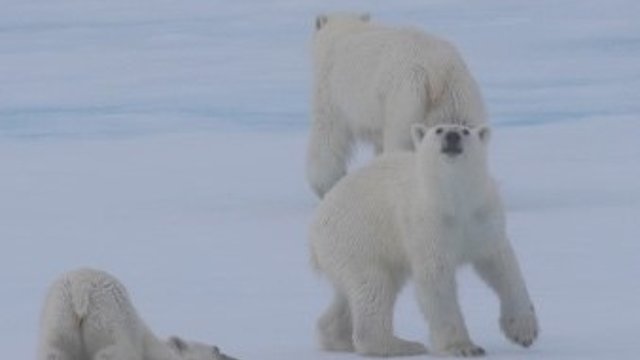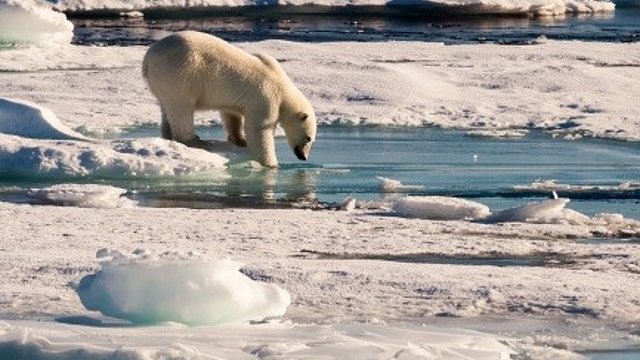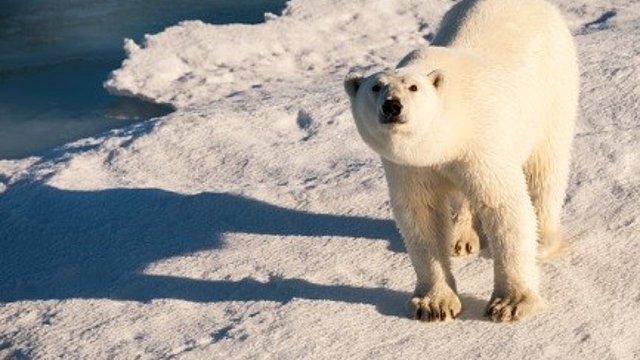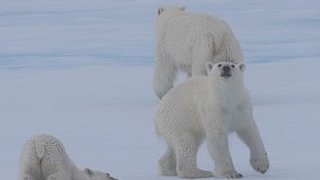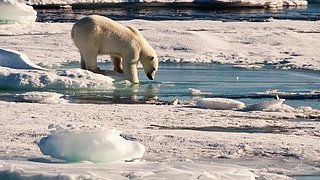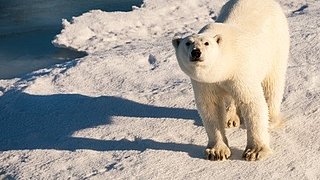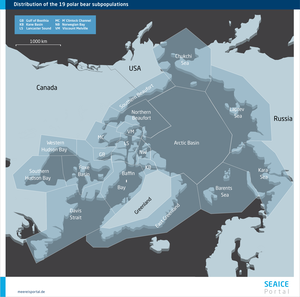Polar bears
Polar bears (Ursus maritimus) live in the Arctic near the North Pole, particularly on seasonal sea ice. They are among the largest land-based predators on the planet. The sea ice is especially important for them, because they use it for hunting, mating, and rearing their young. In addition, the bears undertake extended migrations on the ice. Polar bears prefer sea-ice regions that lie above the continental shelf, as they offer plentiful food. In summer and autumn, when the seasonal sea ice has melted, they either stay on the multiyear ice in the High Arctic or go to land. In subarctic regions like Hudson Bay, Foxe Basin, Baffin Bay and Davis Strait, the seasonal sea ice disappears completely. In these areas, polar bears spend the ice-free time on the mainland, until new sea ice forms in winter. Though their preferred prey are ringed seals, if the opportunity presents itself they also feed on beluga whales, narwhals, walruses, bearded seals, harbour seals, reindeer, birds and bird eggs. In certain regions, harp seals and hooded seals are also important food sources (Thiemann et al., 2008). Adult males can grow to over two metres and weigh 400 to 600 kilogrammes on average. Females are slightly smaller and significantly lighter, reaching up to two metres and weighing between 200 and 350 kilogrammes. The total polar bear population is estimated at 20,000 to 25,000, divided among 19 subpopulations.
